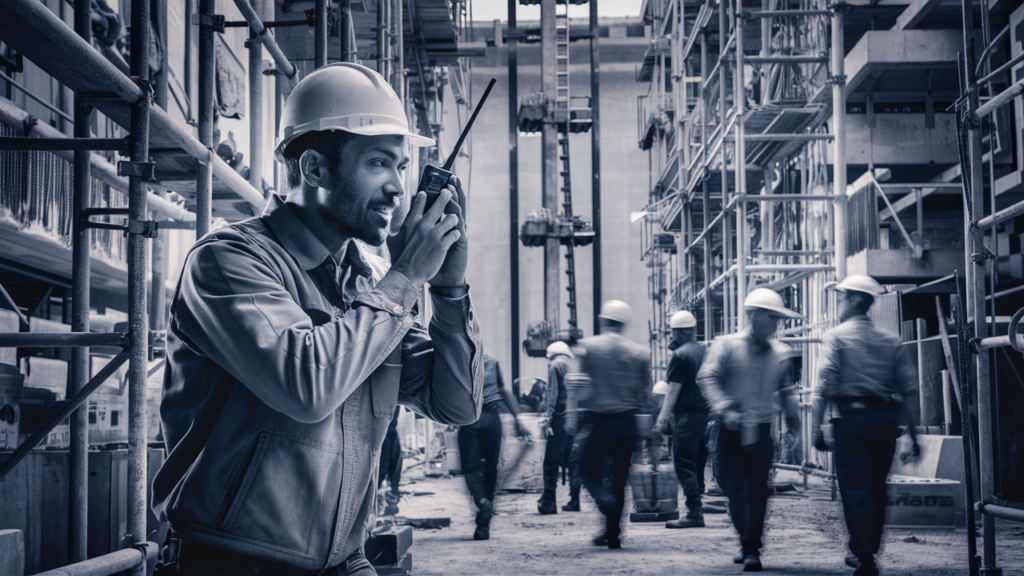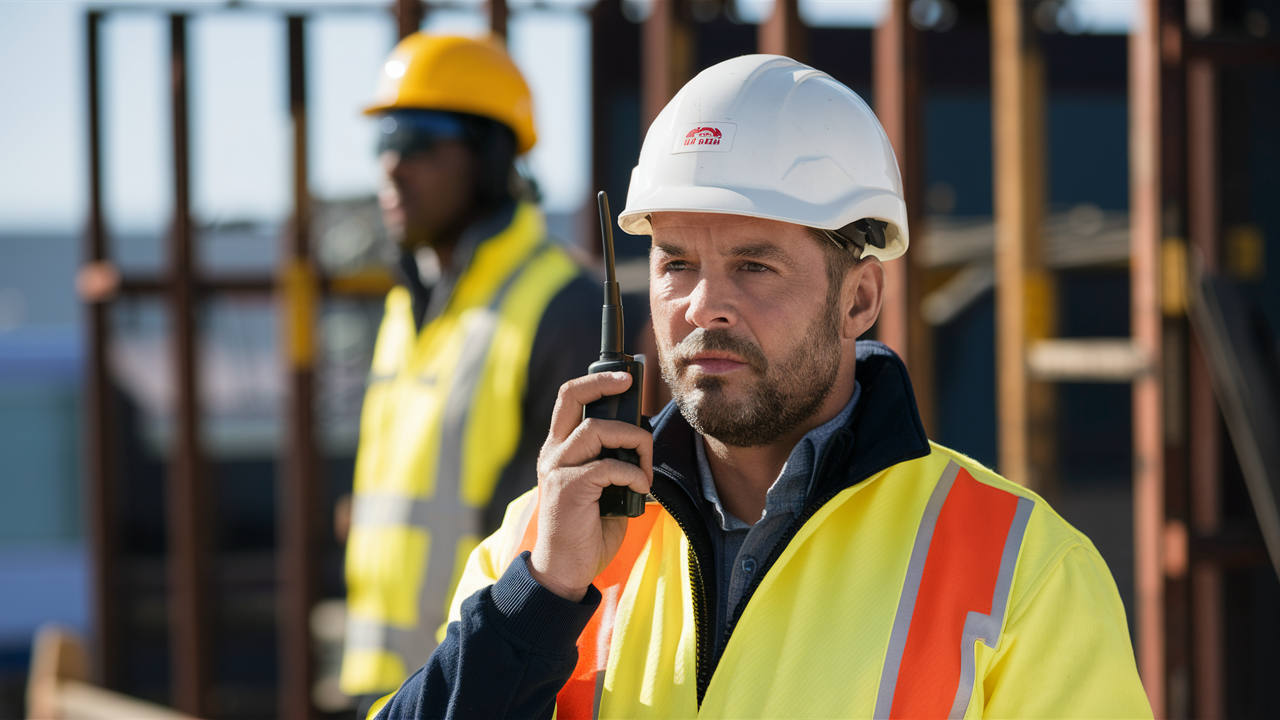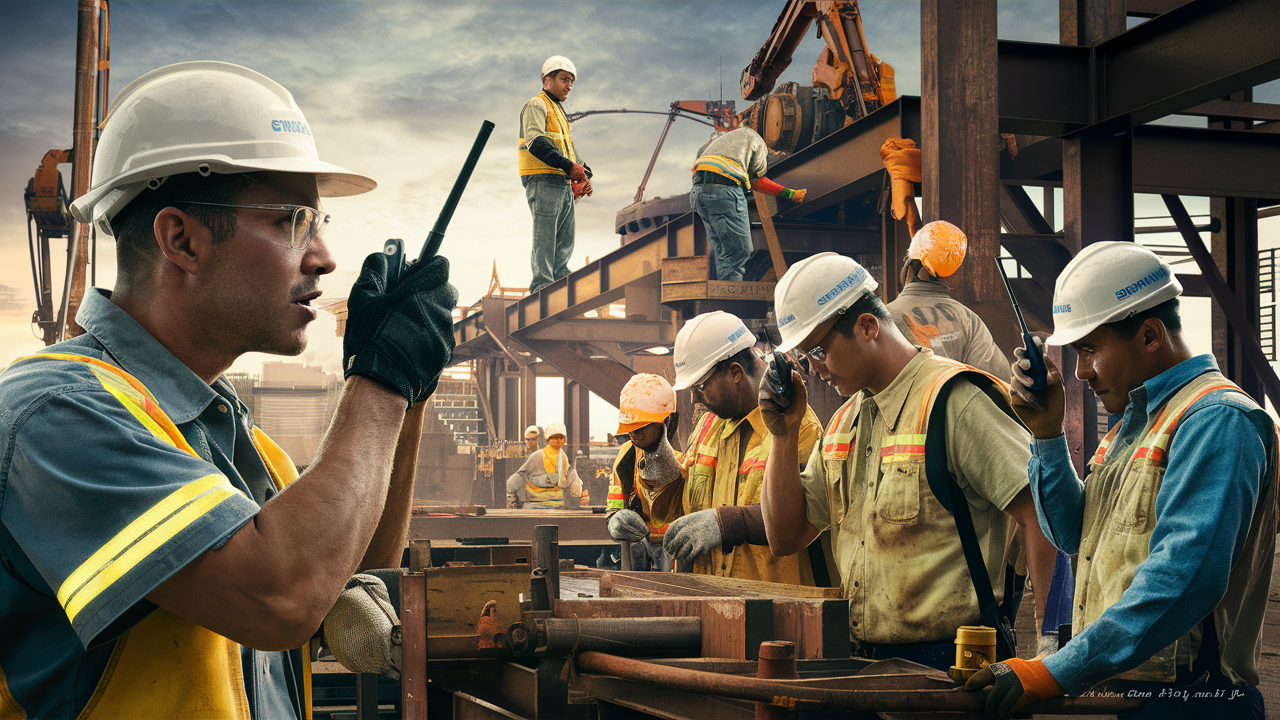
Maximizing Safety: The Power of Effective Communication in Construction
Ready to unlock the secrets of maximizing safety in construction?
The key lies in effective communication.
Discover the unparalleled impact of clear instructions, strategic hazards mitigation tactics, equipment use briefings, and essential team coordination in ensuring a secure worksite.
Dive into the transformative benefits of leveraging two-way radios and reap the rewards of seamless communication.
Unravel the importance of communication in construction safety and harness the power of advanced technology to elevate your team’s performance.
Stay ahead of the curve with insights into industry-leading practices that prioritize safety without compromising efficiency.
Get ready to revolutionize your approach to construction safety.

Ensuring Clear Instructions
Clear instructions are essential in the construction industry to maintain a safe working environment. Effective communication plays a vital role in ensuring that everyone on-site understands what needs to be done and how to do it safely. Here are some key strategies to ensure clear instructions:
Utilize Two-Way Radios:
The Importance of Communication in Construction Safety cannot be overstated. Two-way radios enable instant communication between team members, supervisors, and managers, facilitating quick clarification of instructions and immediate response to any safety concerns.
Use Visual Aids:
Incorporating visual aids such as diagrams, charts, and signage can supplement verbal instructions, making it easier for workers to grasp complex tasks and safety protocols.
Provide Written Instructions:
Alongside verbal communication, written instructions act as a reference point for workers to revisit whenever needed. Clearly written procedures can help prevent misunderstandings and errors.
By implementing these strategies and emphasizing the Benefits of Two-Way Radios in construction safety, teams can enhance their communication practices, minimize risks, and create a more secure work environment.
Hazards Mitigation Tactics
When it comes to ensuring the safety of workers on construction sites, implementing effective hazards mitigation tactics is essential. By leveraging clear communication strategies and utilizing tools like two-way radios, construction teams can significantly minimize risks and prevent accidents.
Job Hazard Analysis:
Conducting a thorough job hazard analysis is crucial to identify potential risks and hazards beforehand. By assessing each task and its associated risks, workers can be better prepared and equipped to handle hazardous situations proactively.
Proper Signage and Labeling:
Utilizing clear signage and labeling for hazardous areas, materials, or equipment can prevent confusion and help workers navigate the site safely. Signage should be prominently displayed and easily understandable to all workers on-site.
Regular Safety Meetings:
Frequent safety meetings provide a platform for discussing potential hazards, sharing best practices, and reinforcing safety protocols. Two-way radios can enhance these meetings by enabling real-time communication and quick responses to safety concerns.
Personal Protective Equipment (PPE):
Ensuring that all workers have access to and consistently wear appropriate PPE is essential for mitigating hazards. Regular checks on the condition and proper use of PPE should be a standard practice on construction sites.
By prioritizing communication and leveraging technologies like two-way radios, construction teams can foster a safer work environment, reduce accidents, and enhance overall project efficiency. The importance of communication in construction safety cannot be understated, and the benefits of incorporating two-way radios are invaluable in ensuring timely and effective response to potential hazards.
Equipment Use Briefings
When it comes to ensuring construction site safety, effective communication is paramount. Conducting thorough equipment use briefings plays a key role in mitigating risks and promoting a safe work environment. Here’s how incorporating the benefits of two-way radios enhances the importance of communication in construction safety:
Clarity and Precision:
Clearly communicate safety protocols and operating procedures to all workers.
Ensure that every team member understands the instructions without any confusion.
Real-time Updates:
Instantly relay important information about potential hazards or changes in work processes.
Enable swift response to emergencies or evolving situations on the site.
Coordination and Collaboration:
Promote teamwork by facilitating seamless communication among different teams and departments.
Enhance coordination between equipment operators, supervisors, and ground personnel.
Hazard Identification:
Encourage workers to report any safety concerns or hazards they encounter during equipment use.
Promptly address identified risks to prevent accidents or injuries.
By incorporating comprehensive equipment use briefings and utilizing two-way radios, construction companies can maximize safety protocols, foster a culture of awareness, and proactively address potential risks, ultimately creating a safer work environment for all individuals involved.
Team Coordination Essentials
The Importance of Communication in Construction Safety cannot be overstated. Effective team coordination is essential for a safe working environment. Here are key essentials to maximize safety on construction sites:
Clear Communication Channels:
Establishing clear communication channels is crucial. Utilize two-way radios to ensure real-time communication between team members, supervisors, and managers.
Pre-Task Planning Meetings:
Conduct pre-task planning meetings to discuss safety procedures, potential hazards, and emergency protocols. Encourage open dialogue and address any concerns raised by the team.
Regular Safety Updates:
Provide regular safety updates to keep everyone informed about any changes in procedures, regulations, or site conditions. Use tools like notice boards or digital platforms for easy access to information.
Collaborative Problem-Solving:
Foster a culture of collaborative problem-solving. Encourage team members to share their ideas and solutions to improve safety protocols and address any issues promptly.
Training and Skill Development:
Invest in ongoing training and skill development programs to ensure that all team members are well-equipped to handle safety challenges effectively. Regular refresher courses can reinforce best practices.
By prioritizing effective communication methods like the Benefits of Two-Way Radios and implementing these team coordination essentials, construction sites can enhance safety standards and mitigate potential risks.
Two-Way Radios Advantage
In the realm of construction safety, effective communication can mean the difference between a smooth operation and potential hazards. Two-way radios are a pivotal tool that enhances communication on construction sites, promoting efficiency and overall safety.
The Importance of Communication in Construction Safety:
Clear and timely communication is vital to alert workers about potential dangers.
In emergency situations, quick relay of information can save lives and minimize injuries.
Coordination among team members ensures that tasks are completed safely and accurately.
The Benefits of Two-Way Radios:
Immediate Response: Two-way radios enable instant communication, allowing workers to address issues promptly.
Hands-Free Operation: Workers can keep their hands free for tasks while staying connected through their radios.
Enhanced Team Collaboration: Team members can easily coordinate their efforts and make real-time decisions.
Increased Productivity: With streamlined communication, projects progress smoothly without disruptions.
Conclusion
In maximizing safety in construction, effective communication stands as a paramount pillar.
Ensuring clear instructions, implementing hazard mitigation tactics, conducting equipment use briefings, and coordinating the team efficiently are indispensable practices.
However, the key player in this symphony of safety is undoubtedly the utilization of two-way radios.
These devices offer real-time communication, swift response to emergencies, and seamless coordination among team members.
By integrating these tools seamlessly into daily operations, construction sites can significantly enhance safety protocols, prevent accidents, and promote a proactive safety culture.
The importance of communication in construction safety, alongside the benefits of two-way radios, cannot be overstated.
